A pediatric clinical examination is a comprehensive assessment of a child’s health‚ combining history taking‚ physical evaluation‚ and diagnostic tools to ensure accurate diagnosis and effective management.
Overview of Pediatric Clinical Examination
A pediatric clinical examination involves a systematic approach to assess a child’s health‚ incorporating history taking‚ physical inspection‚ and diagnostic tests. It begins with gathering detailed information about the child’s medical history‚ symptoms‚ and lifestyle. The physical examination includes general inspection‚ vital sign measurement‚ and a head-to-toe assessment. Diagnostic tools such as laboratory tests and imaging studies are often employed to confirm findings. Specialized techniques may be used for specific conditions‚ such as hip dysplasia in newborns. This comprehensive process ensures accurate diagnosis and tailored treatment plans‚ addressing the unique needs of children at various developmental stages.
Importance of Pediatric Clinical Examination in Diagnosis
Importance of Pediatric Clinical Examination in Diagnosis
Pediatric clinical examination is crucial for accurate diagnosis‚ as it combines anamnesis‚ physical inspection‚ and diagnostic tools to identify conditions specific to children. Early detection of issues like hip dysplasia or ulcerative colitis ensures timely intervention. The examination’s structured approach‚ including OSCEs‚ trains healthcare providers to recognize abnormalities. Regular assessments in preschoolers‚ such as dental caries checks‚ prevent complications. By integrating clinical findings with laboratory and imaging results‚ professionals can develop targeted therapies‚ improving outcomes. This methodological process is vital for addressing the unique health needs of children‚ emphasizing prevention and early treatment to promote long-term well-being.
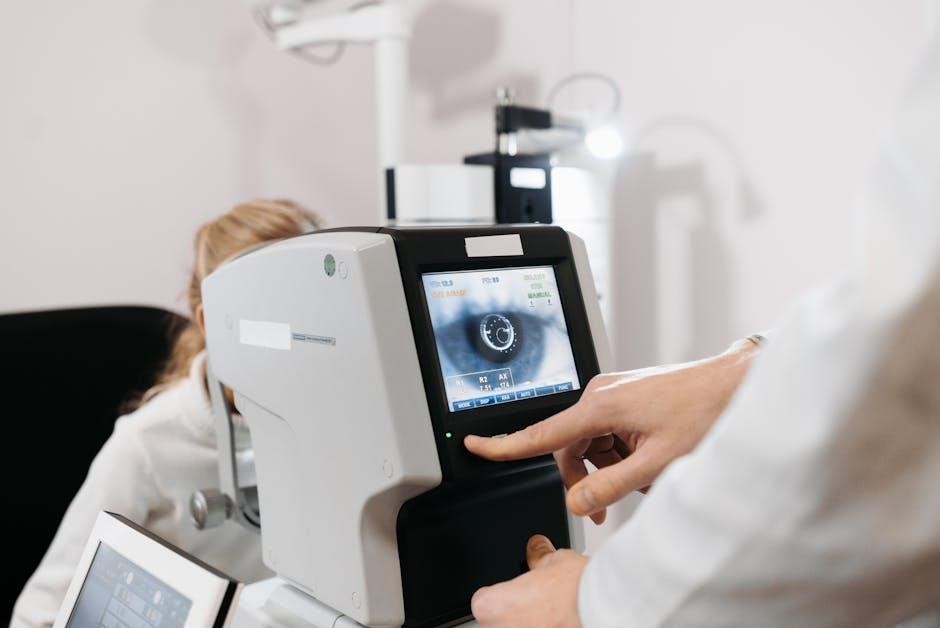
History Taking in Pediatric Clinical Examination
Pediatric history taking involves gathering information from parents/guardians about the child’s symptoms‚ medical history‚ and development‚ aiding in early diagnosis and targeted care.
Components of Pediatric History
A pediatric history includes the chief complaint‚ detailed birth history‚ developmental milestones‚ immunization status‚ and family medical history. It also covers dietary habits‚ past illnesses‚ and allergies. Parents or guardians often provide this information‚ as children may not communicate effectively. The history helps identify patterns and risk factors‚ guiding further examination and diagnosis. According to studies‚ a thorough pediatric history is essential for early detection of conditions like hip dysplasia and ulcerative colitis. Researchers emphasize the importance of incorporating laboratory and radiological findings to support clinical diagnoses‚ ensuring comprehensive care for children. This approach aligns with structured methods outlined in pediatric clinical examination PDFs‚ promoting accurate and effective patient management.
Approach to History Taking in Children
History taking in pediatric clinical examinations requires patience and adaptability‚ as children may not communicate effectively. The clinical-anamnestic method is often used‚ focusing on the chief complaint‚ developmental milestones‚ and family history. Parents or guardians typically provide detailed information‚ including birth history‚ immunizations‚ and past illnesses. According to studies‚ a structured approach ensures comprehensive data collection‚ aiding in early diagnosis of conditions like hip dysplasia and ulcerative colitis. The process also involves assessing dietary habits‚ allergies‚ and lifestyle factors. Researchers emphasize the importance of incorporating parental insights and using age-appropriate communication techniques. This method aligns with recommendations in pediatric clinical examination PDFs‚ ensuring accurate and effective patient evaluations.
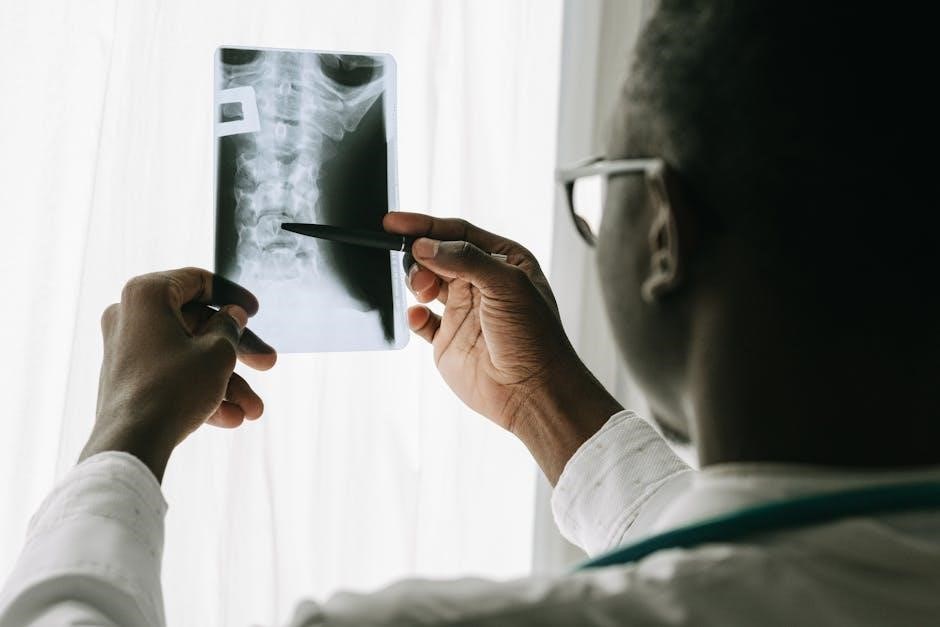
Physical Examination in Pediatrics
A physical examination in pediatrics involves general inspection‚ vital signs assessment‚ and age-specific evaluations to ensure accurate diagnosis and appropriate treatment planning.
General Inspection and Vital Signs
General inspection in pediatric exams involves observing a child’s overall appearance‚ growth‚ and developmental milestones. Vital signs‚ such as temperature‚ heart rate‚ respiratory rate‚ blood pressure‚ and oxygen saturation‚ are measured. These signs vary by age‚ with infants and adolescents having different normal ranges. Abnormal findings‚ like tachypnea or bradycardia‚ may indicate underlying conditions. The integration of inspection and vital sign assessment with laboratory and imaging studies ensures a comprehensive evaluation. This approach helps identify developmental delays‚ infections‚ or chronic illnesses early‚ guiding appropriate interventions. Regular monitoring of these parameters is essential for maintaining pediatric health and addressing potential issues promptly.
Head-to-Toe Examination in Children
A head-to-toe examination in children involves a systematic assessment of all body systems. Starting with the head‚ inspect for signs of trauma‚ developmental abnormalities‚ or infections. Check the eyes‚ ears‚ nose‚ and throat for redness‚ discharge‚ or swelling. Palpate lymph nodes for enlargement. Examine the neck for thyroid abnormalities and the chest for respiratory effort. Auscultate heart and lung sounds to detect abnormalities. Inspect the abdomen for distension or tenderness‚ and palpate for organ enlargement. Examine the extremities for deformities or injuries. Finally‚ assess the skin for rashes or lesions. This method ensures a thorough evaluation‚ aiding in early detection of conditions and guiding further diagnostic tests if needed.
Age-Specific Considerations in Physical Exam
Age-specific considerations are crucial in pediatric physical examinations to ensure accuracy and appropriateness. Infants require gentle handling and assessment of fontanelles‚ while toddlers may need distraction techniques to cooperate. School-aged children can follow instructions‚ enabling a more structured exam. Adolescents may require privacy and sensitivity‚ especially during puberty. Developmental milestones‚ such as neck control in infants and gait assessment in toddlers‚ are essential. Vital signs vary by age‚ with heart and respiratory rates decreasing as children grow; Understanding these age-related differences ensures a tailored approach‚ enhancing diagnostic accuracy and patient comfort. Adaptation of techniques to the child’s developmental stage is key to a successful examination.
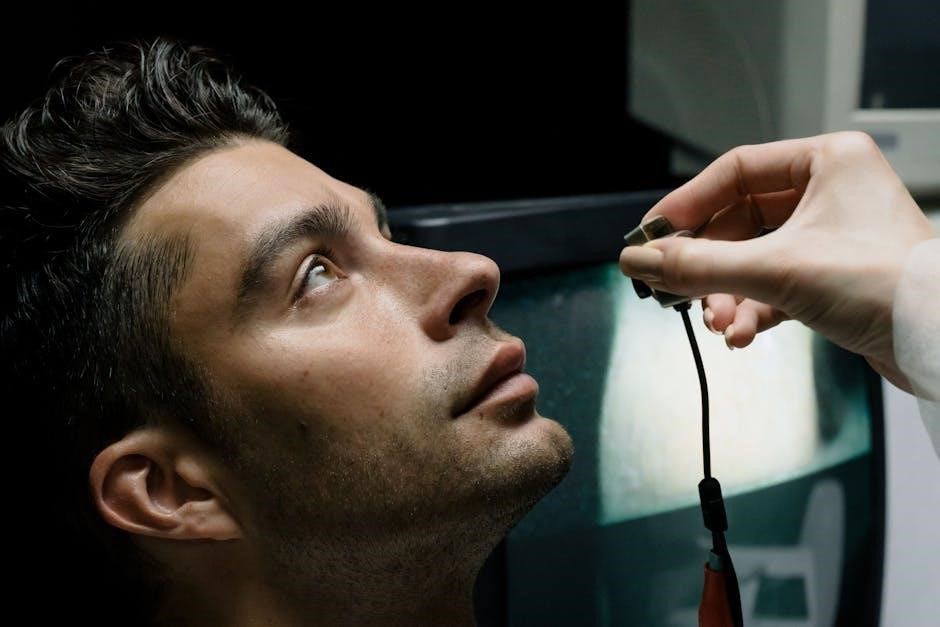
Diagnostic Tools and Tests
Diagnostic tools in pediatrics include lab investigations‚ imaging‚ and specialized tests to identify conditions like infections‚ fractures‚ or organ dysfunction‚ aiding accurate diagnosis and treatment planning.
Laboratory Investigations in Pediatric Exams
Laboratory Investigations in Pediatric Exams
Laboratory investigations play a crucial role in pediatric exams‚ providing essential data to diagnose and manage conditions. Common tests include complete blood counts (CBC) to assess anemia or infection‚ blood cultures for bacteremia‚ and electrolyte panels to evaluate hydration and renal function. Liver and kidney function tests are also performed to detect organ dysfunction. In cases of suspected metabolic disorders‚ specific metabolic panels are ordered. Blood glucose levels are monitored for diabetes‚ while C-reactive protein (CRP) and erythrocyte sedimentation rate (ESR) help identify inflammation or infection. Stool and urine analyses are frequently used to diagnose gastrointestinal infections or urinary tract issues. These tests guide treatment decisions and ensure personalized care for children.

Imaging Studies in Pediatric Diagnosis
Imaging studies are vital in pediatric diagnosis‚ offering insights into structural abnormalities and guiding treatment. Common modalities include X-rays for fractures or respiratory issues‚ ultrasound for abdominal or musculoskeletal assessments‚ and CT scans for detailed organ visualization‚ though used cautiously due to radiation risks. MRI is preferred for soft tissue evaluation‚ especially in neuroimaging‚ without radiation exposure. Fluoroscopy aids in dynamic processes like swallowing disorders. Selection of imaging depends on the child’s condition‚ prioritizing safety and minimizing radiation. Parental education and preparation are crucial to ensure cooperation and reduce anxiety during procedures‚ making imaging studies effective and stress-free for pediatric patients.
Specialized Diagnostic Tools for Children
Specialized diagnostic tools are essential in pediatric care‚ tailored to children’s unique needs. Tools like otoscopy and ophthalmoscopy help assess ear and eye health‚ while pediatric stethoscopes enable accurate heart and lung sound evaluation. Neuromuscular assessment tools‚ such as reflex hammers‚ are used for developmental screenings. Portable devices like pulse oximeters and handheld spirometers aid in monitoring oxygen levels and lung function. Additionally‚ child-friendly blood pressure monitors and thermometers are designed for comfort and accuracy. These tools often feature smaller sizes and non-invasive designs to minimize stress during exams. They play a crucial role in early detection and management of conditions‚ ensuring effective and age-appropriate care.
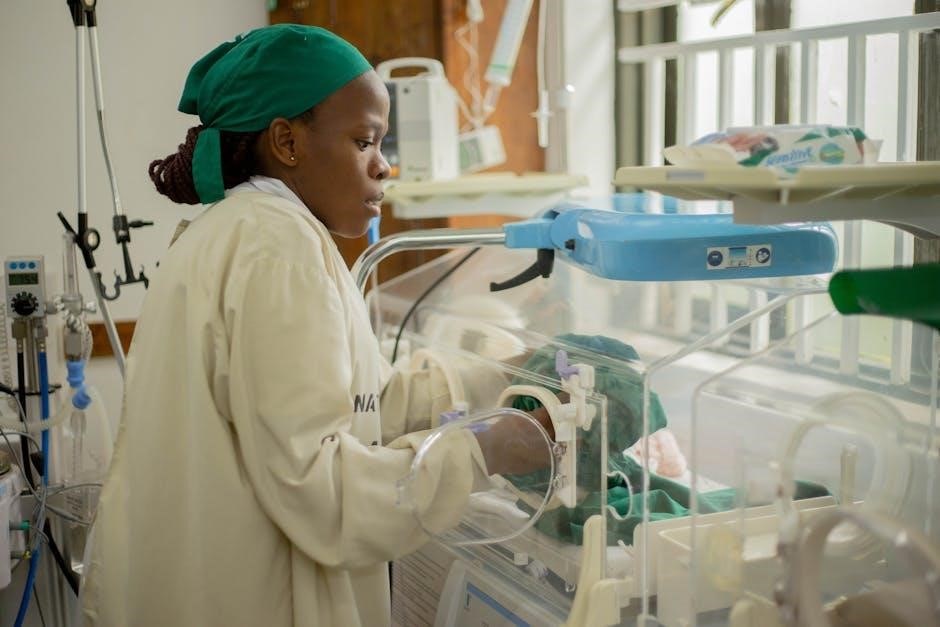
Common Pediatric Conditions and Their Clinical Features
Common pediatric conditions include infections‚ allergies‚ and developmental delays. Symptoms often overlap‚ making diagnosis challenging. A thorough clinical examination is crucial for accurate assessment and treatment planning.
Respiratory Disorders in Children
Respiratory disorders are among the most common pediatric conditions‚ often presenting with cough‚ wheezing‚ or shortness of breath. Asthma‚ bronchiolitis‚ and croup are prevalent‚ requiring careful clinical assessment. Symptoms may vary by age‚ with infants showing nasal flaring or retractions‚ while older children may exhibit wheezing or stridor. Physical examination includes auscultation for abnormal breath sounds‚ such as crackles or wheezes‚ and assessment of respiratory rate and effort. Pulse oximetry and chest X-rays are often used to confirm diagnoses. Understanding age-specific clinical features is essential for accurate diagnosis and effective management of respiratory disorders in children.
Gastrointestinal Disorders in Pediatrics
Gastrointestinal disorders in children are common and often present with symptoms like abdominal pain‚ vomiting‚ or diarrhea. Conditions such as gastroenteritis‚ inflammatory bowel disease‚ and gastroesophageal reflux disease (GERD) are frequently diagnosed. Infants may show signs of dehydration or feeding difficulties‚ while older children may report localized pain or bleeding. Physical examination includes inspection for abdominal distension‚ auscultation for bowel sounds‚ and palpation for tenderness or masses. Diagnostic tools like stool tests‚ blood work‚ or endoscopy may be used; Accurate history-taking and physical findings guide the evaluation and management of these disorders‚ ensuring appropriate care for pediatric patients.
Neurological Disorders in Children
Neurological disorders in children include conditions like epilepsy‚ cerebral palsy‚ and attention-deficit/hyperactivity disorder (ADHD). These disorders often present with symptoms such as seizures‚ developmental delays‚ or behavioral changes. During a clinical examination‚ a detailed neurological assessment is essential‚ focusing on cranial nerves‚ muscle strength‚ tone‚ reflexes‚ coordination‚ and balance. Developmental milestones and cognitive function should also be evaluated. Diagnostic tools like electroencephalograms (EEG) for seizures or imaging studies (e.g.‚ MRI) for structural abnormalities may be required. Early identification and intervention are critical to improve outcomes in children with neurological disorders‚ emphasizing the importance of a thorough pediatric clinical examination.

Clinical Examination of Specific Body Systems
This section provides guidance on examining specific pediatric body systems‚ emphasizing age-specific techniques and signs of illness‚ while utilizing diagnostic tools like auscultation and palpation effectively.
Clinical Examination of the Cardiovascular System
The cardiovascular examination in children involves inspecting for signs of heart disease‚ such as cyanosis or edema. Palpation assesses pulse rate‚ rhythm‚ and strength‚ while thrills indicate murmurs. Auscultation focuses on heart sounds and murmurs‚ which are common in pediatric patients but not always pathological. Blood pressure measurement is age-specific‚ with hypertension warranting further investigation. Special attention is given to the femoral pulses in infants to detect coarctation of the aorta. The anterior fontanelle in infants may reveal clues about cardiac function. Murmurs‚ though frequent‚ often represent benign conditions unless accompanied by symptoms like dyspnea or failure to thrive. Accurate assessment ensures early detection of congenital or acquired heart diseases.
Clinical Examination of the Respiratory System
The respiratory examination in children begins with inspection‚ noting nasal flaring‚ retractions‚ or use of accessory muscles. Auscultation assesses breath sounds‚ wheezing‚ or crackles. Percussion may reveal hyperresonance in asthma or dullness in pneumonia. Palpation checks for tenderness or vibrations. Vital signs include respiratory rate‚ depth‚ and oxygen saturation. In infants‚ nasal breathing is normal‚ while older children should breathe orally. Wheezing suggests asthma‚ while crackles may indicate infection. Stridor points to upper airway obstruction. The examination helps identify common conditions like asthma‚ bronchiolitis‚ or pneumonia‚ guiding further diagnostic steps and management. Age-specific techniques ensure accurate assessment in pediatric patients.
Clinical Examination of the Abdomen in Children
The abdominal examination in children begins with inspection for distension‚ scars‚ or visible masses. Auscultation assesses bowel sounds‚ listening for normal or abnormal patterns. Percussion helps identify areas of tenderness or organ enlargement. Palpation is gentle‚ starting with non-tender areas to locate masses or organomegaly. In children‚ the liver is often palpable at the costal margin‚ while splenomegaly may indicate illness. Special attention is given to areas like the McBurney point for appendicitis. The examination is adapted to the child’s age and cooperation level‚ ensuring comfort and accuracy. Common findings include constipation‚ urinary retention‚ or signs of gastrointestinal disorders. This systematic approach aids in diagnosing abdominal conditions promptly.
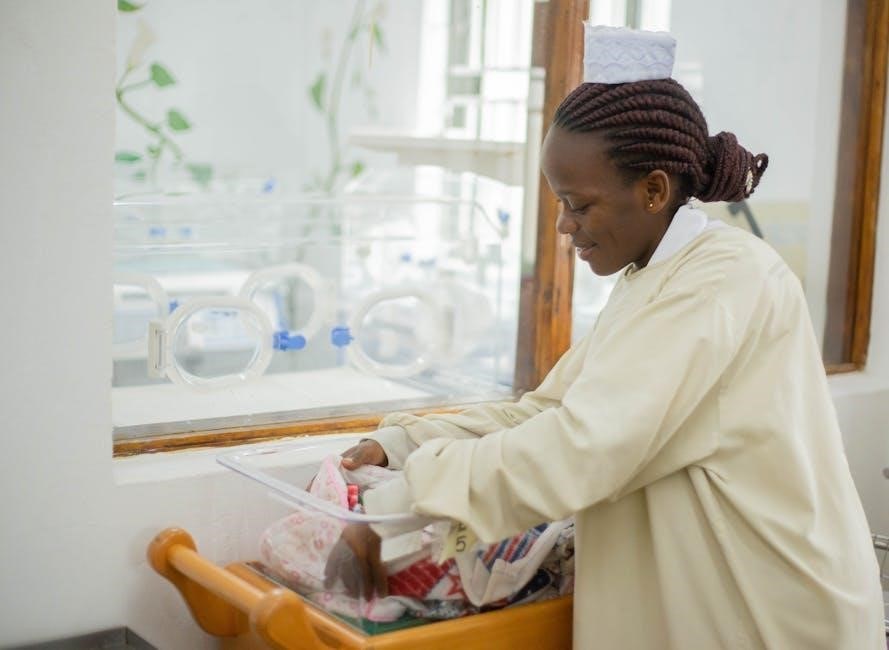
Osce and Structured Clinical Examinations
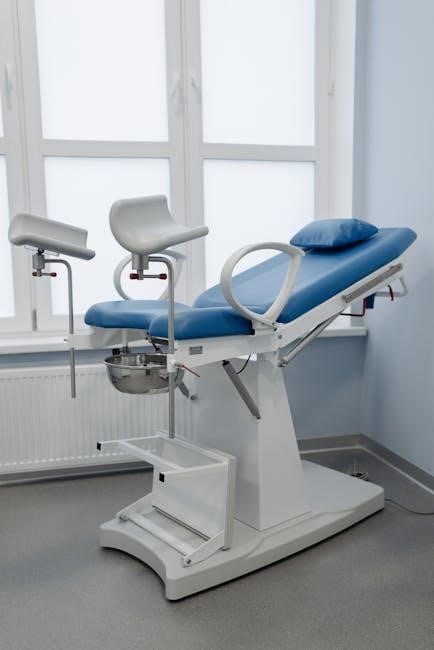
OSCE and Structured Clinical Examinations
OSCEs (Objective Structured Clinical Examinations) in pediatrics assess clinical skills through standardized‚ real-life scenarios‚ ensuring consistent evaluation of history taking‚ physical examination‚ and communication skills in trainees.
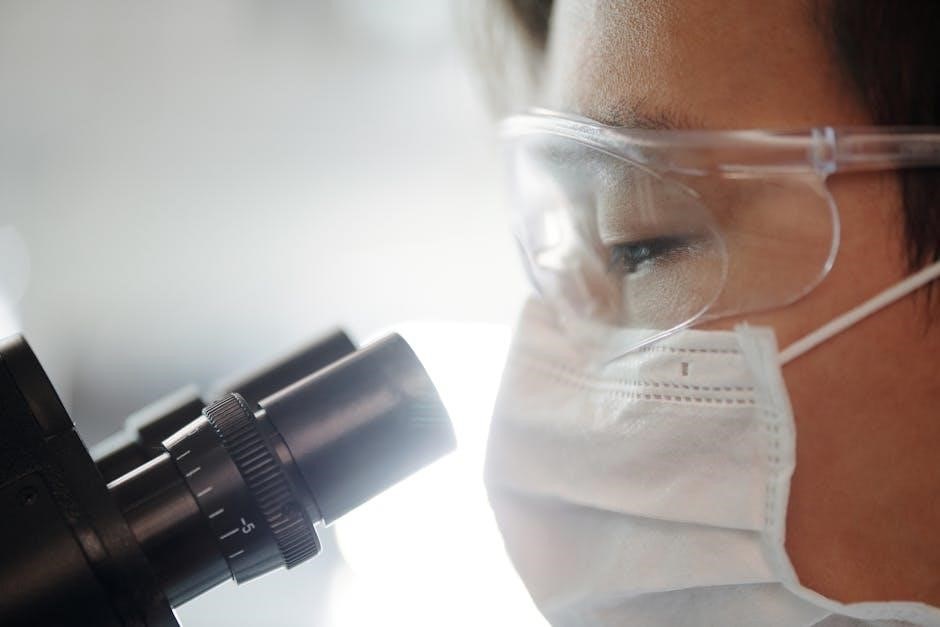
Objective Structured Clinical Examinations (OSCEs) in Pediatrics
Objective Structured Clinical Examinations (OSCEs) are standardized assessments evaluating clinical competence in pediatrics. They consist of multiple stations where candidates perform tasks like history taking‚ physical exams‚ and communication. Each station focuses on specific skills‚ such as diagnosing respiratory distress or assessing developmental milestones. OSCEs ensure consistency and fairness in evaluating trainees. They also incorporate scenarios with standardized patients or child actors to mimic real-life clinical encounters. This format helps assess not only technical proficiency but also interpersonal and professional behaviors. Regular OSCEs in pediatric training ensure comprehensive preparation for clinical practice‚ emphasizing evidence-based care and patient-centered communication.
Structured Student Feedback in Clinical Training
Structured student feedback is a cornerstone of pediatric clinical training‚ enhancing learning and professional development. Regular‚ constructive feedback helps students identify strengths‚ address weaknesses‚ and refine clinical skills. Feedback is typically provided by supervisors‚ peers‚ and patients‚ ensuring a comprehensive perspective. It focuses on specific behaviors‚ such as communication‚ examination techniques‚ and decision-making‚ rather than general praise or criticism. Tools like feedback forms and direct observations are used to ensure objectivity. Students also engage in self-assessment to align their perceptions with feedback received. Timely and actionable feedback fosters growth‚ improving competence and confidence in pediatric care‚ ultimately enhancing patient outcomes and professionalism.
Pediatric clinical examination is a vital skill‚ combining history taking‚ physical assessment‚ and diagnostic tools to ensure accurate diagnoses and effective care for children. Continuous learning and adaptation to advancements in pediatrics are essential for healthcare providers to deliver high-quality‚ compassionate care tailored to children’s unique needs.
A thorough pediatric clinical examination involves a combination of history taking‚ physical assessment‚ and diagnostic tools. Key aspects include understanding age-specific developmental milestones‚ performing a head-to-toe examination‚ and interpreting vital signs. Effective communication with children and parents is crucial for accurate history taking. Diagnostic tools like laboratory tests and imaging studies aid in confirming diagnoses. Regular practice and updating knowledge on the latest clinical guidelines ensure proficiency. Emphasizing a child-centered approach fosters trust and cooperation during exams. Mastery of these skills enables healthcare providers to deliver precise and compassionate care‚ addressing the unique needs of pediatric patients effectively.
Future Directions in Pediatric Clinical Practice
Future directions in pediatric clinical practice emphasize advancements in telemedicine‚ personalized medicine‚ and AI-driven diagnostics. Telemedicine will enhance access to care‚ especially in underserved areas. Personalized medicine‚ leveraging genetic data‚ will tailor treatments to individual needs. AI integration will improve diagnostic accuracy and streamline workflows. Training programs will focus on simulation-based learning to refine clinical skills. Global health initiatives will address disparities in pediatric care. Emphasizing preventive care and mental health will be prioritized. Collaborative research will drive evidence-based practices. These innovations aim to improve outcomes‚ ensuring equitable and high-quality care for all children.
